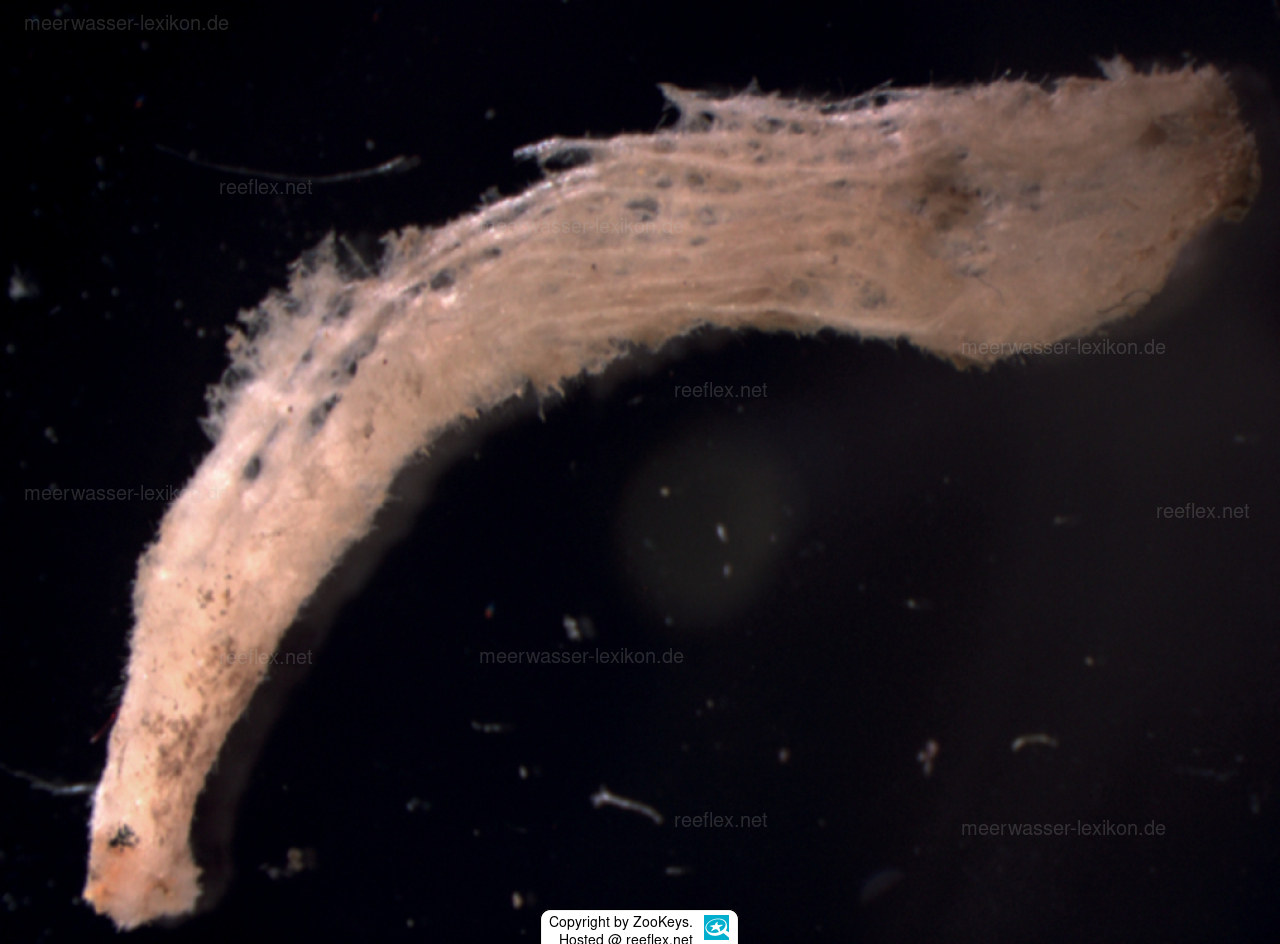Info
Auletta sycinularia Schmidt, 1870
The marine sponge Auletta sycinularia was found in association with a rock on which a large Hexactinellidus was growing, in the area of the FGBNMS also on black coral.The sponge forms a single white tube (1 - 3 mm wide, 1.6 cm high) and has a wrinkled surface.At the tip of the tube is a single ovule.
In adult sponges, the tubes appear smooth and slender (3 - 10 cm long, 1 cm wide) and they have a supporting stalk (2 - 3 cm long).
During growth, sponges produce more body cells than they need to build their sponge body and release the excess cells into the sea, which are eaten by fish and invertebrates.
Auletta sycinularia is not an animal for a tropical community aquarium.
The marine sponge Auletta sycinularia was found in association with a rock on which a large Hexactinellidus was growing, in the area of the FGBNMS also on black coral.The sponge forms a single white tube (1 - 3 mm wide, 1.6 cm high) and has a wrinkled surface.At the tip of the tube is a single ovule.
In adult sponges, the tubes appear smooth and slender (3 - 10 cm long, 1 cm wide) and they have a supporting stalk (2 - 3 cm long).
During growth, sponges produce more body cells than they need to build their sponge body and release the excess cells into the sea, which are eaten by fish and invertebrates.
Auletta sycinularia is not an animal for a tropical community aquarium.







 ZooKeys
ZooKeys


